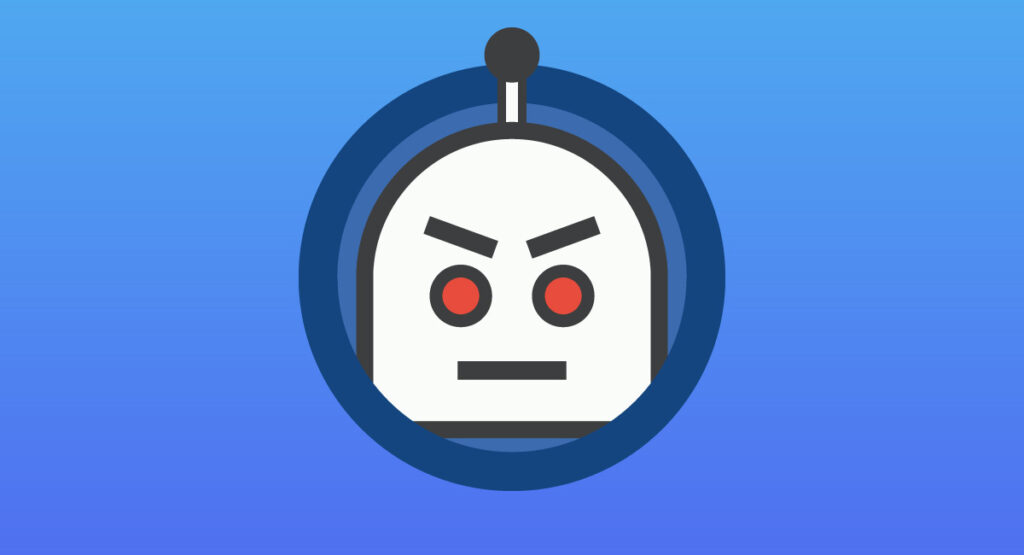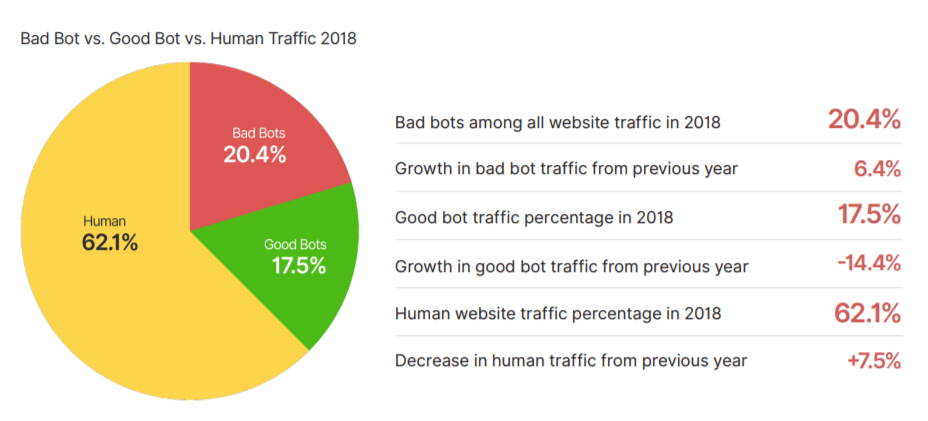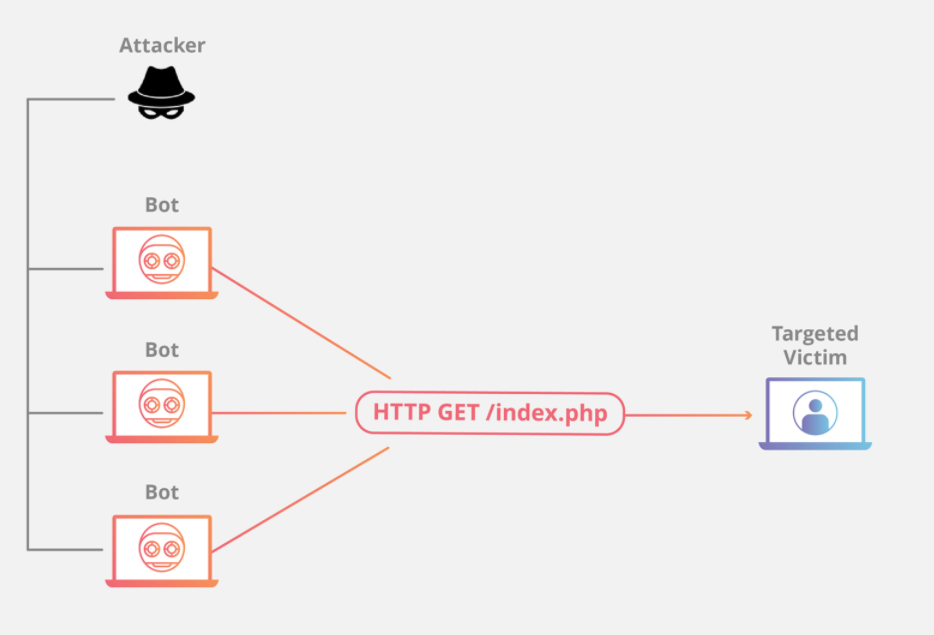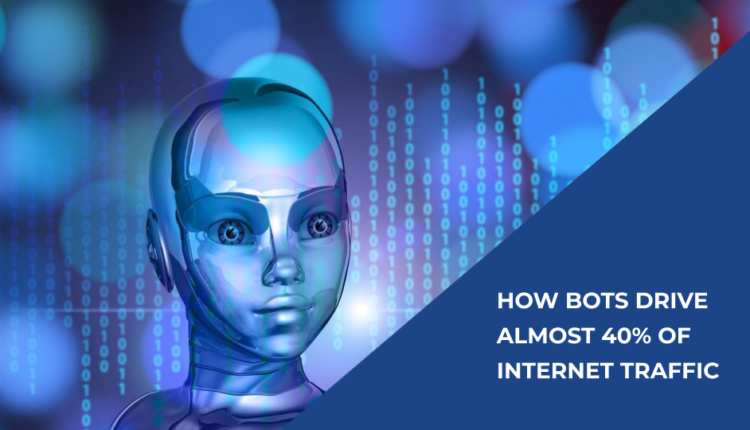Everyone who manages a website wants to know how popular the site actually is and the organic traffic could be a good indicator of that.
However, did you know that not all of the traffic is human? In fact, quite a good portion might consist of bot traffic, which depending on its purpose, might have an influence on your website.
But don’t worry. Even though your first instinct probably tells you to avoid them however you can, the truth is that bots are not necessarily bad.
Many of them actually help your website and we think that it’s important to be aware of that distinction.

And that’s why we will look into how the situation looks like on the internet, how did these non-human visitors got their „bad name“ and also if there is something we can do to manage them.
Bot traffic across the internet
The specific ratio of bots vs human users within traffic varies a little with each report. But they can generally agree on 2 things.
First things, around 40% of all internet traffic is made up of bots, and second, that the number of “bad bots” is increasing.
This year’s Bad Bot Report by Imperva suggests that bad bots make up as high as 24% of all traffic and as much as 50% of them are considered to be moderately sophisticated.

Most of them are trying to hide by copying popular browsers, in this case – Google Chrome. That is one of the reasons why they fight against them is so challenging.
Some websites and companies even go as far as blacklisting traffic from the entire countries with Russia and China being at the top of this list.
Good bot traffic
So what kind of bots are not only safe but actually helpful? Well, as it turns out, quite a lot of what you consider essential is actually their job.
1. Search engine bots
Perhaps the most important step in order to even reach your users is to be listed in the search engines like Google or Bing.
They are after all the main tool for browsing the internet. These bots scour the web for new additions and help your site to be seen by adding them as part of the search results.
2. Monitoring bots
Proper maintenance is a must when you own a website. These kinds of bots check up on your website regularly and make sure everything is running smoothly or simply that it’s running at all.
If there are any issues, their job is to let you know so you can fix the problem.
3. SEO Crawlers
Every time you hear about SEO optimization you probably come across goals like „ranking first“ or „ranking high“ on the search engines. But first, you would need to know if your ranking efforts work well.
These bots will provide you with an answer by crawling your site and giving you data about your ranking’s potential.
4. Copyright bots
Most creators came across the word „copyright“. When you create something like an image or a video, you probably don’t want random people using it and claiming it’s their own.
Making sure that it doesn’t happen is difficult, especially when it comes to a content-rich place like the internet. That is why this task is automated and regulated by these bots.
Their job is to scan the content across the internet and make sure that no one is using it without proper legal steps.
Bad bot traffic
On the other hand, there are also malicious bots that gave bots a negative reputation in the first place. Sooner or later, most of the people who use the internet already came across these types of bots at some point.
Their purpose varies and might have different reasons. Some of them were created simply to annoy you, while others are out there to manipulate the market, damage your site, or even steal some valuable digital data.
But in general, they are benefiting only the person who sent them out.
1. Web Scrapers
If you ever wondered how someone sketchy got your e-mail address or another sort of contact information, look no more.
These bots were designed to search through websites for valuable information and content which someone else can use for their own benefit.
2. Spam bots
They are exactly what you would expect. Bots designed to spam often unrelated messages somewhere on your e-mail or website. Thankfully, the internet got a lot better with filtering those kinds of messages.
But, you can occasionally still come across some random promotional or weird looking messages along the way.
The good news is that they are usually not directly harmful. You and your users will probably just find them annoying. Then again, if it also affects your users, not managing them might reflect poorly on you and your site.
3. DDoS bots
A dangerous type of bots used in many cyberattacks with the purpose of bringing your website offline. Also known as a Denial-of-service attack can have serious consequences.

If you’re lucky, the issue is only temporary. But in worse cases, you will need to use additional resources in order to fix it. Not to mention financial loss resulting from being offline for some period of time.
How do you recognize bot traffic?
One of the more simple ways of finding out how much of your traffic consists of bots are using some web analytics tool like Google Analytics for example.
Basically, you are on a search for any type of anomalies in your metrics. This can include an unusually high number of page views, a higher bounce rate on a specific page, or simply a general increase of traffic from a location where it had little reason to come from.
You might see sudden spikes or anomalies in other metrics as well. Generally, you simply need to know your own website and distinguish between normal and unusual patterns.
How to manage bot traffic
However, there are ways to manage these bots at least to some extent. The most basic one is simply providing them with instructions on what to do once they come across your page.
You can do this by including a robots.txt file. If you want, you can even prevent them from entering your page at all. Though it is important to note that only the good kind of bots have any reason to listen to you.
As in the case of the bad bots, you have an option to block specific IP addresses. It won’t work with all of the malicious bots but it can still help you enough to get rid of some bot-related issues.
Otherwise, in order to get rid of a more advanced type of bots, you will probably need to search for some bot management software.
Conclusion
If you manage a website, it is important to understand your traffic. And since a huge part of that traffic might not even be human, you need to consider what that might mean to you.
In some cases, you need to take action and in some cases, you don’t. But either way, acknowledging that bots are an inseparable part of the internet, understanding what they are and what is their purpose can only give you an advantage.
And if you liked this article and you want to learn more about how search engines work, keep an eye out for our next ones, by visiting our Search section.

Comments are closed.